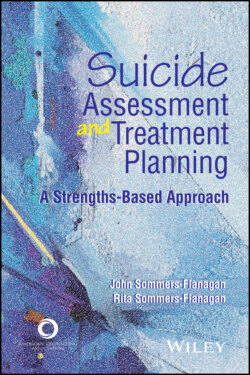Читать книгу Suicide Assessment and Treatment Planning - John Sommers-Flanagan - Страница 15
Stop Reading
ОглавлениеBe sure to follow Rose’s example and stop reading if you need to. During suicide workshops and college classes, we tell people that to avoid being triggered, they can do what our teenage clients do: Just stop listening to us. Suicide information overload happens. One method for dealing with overload is to stop the input, step back, and take time to absorb and regroup.
If you are an avid reader, you can get swept into information about death and suicide and forget to take a break. Planning intermittent breaks from this book and other suicide-related material is wise. You can use the Pomodoro technique: Set a timer for 20 or 30 minutes, and then take a break. Consider inserting a fun, creative, social, or reflective activity into your break time.
You can use a variation on this “stop reading” approach during counseling sessions. For example, if you are feeling overwhelmed in a session, it is perfectly reasonable to take a break from information gathering and instead focus on coping in the moment. You might say something like “When we’re talking about intense topics in counseling, we should also practice positive coping strategies at the same time. So let’s pause, take some breaths, and then talk about how we can weave coping strategies like deep breathing and problem-solving into our session.”
Taking breaks is one coping technique, but not the only one. We recommend having a variety of strategies for self-care. Based on numerous research studies, Norcross and Vandenbos (2018) identified effective strategies that professionals use to manage stress. What follows is our version of Norcross and Vandenbos’s recommendations.
